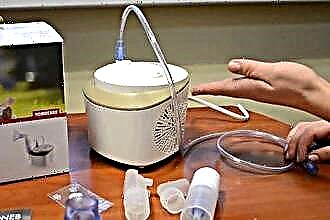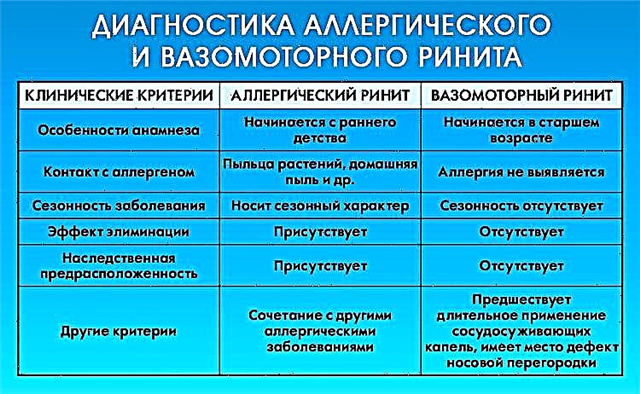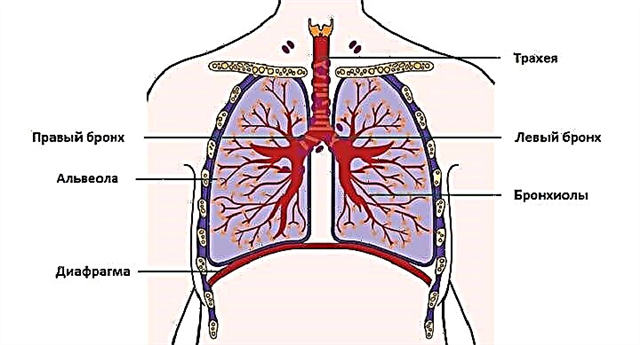The use of a nebulizer for inhalation of drugs is a guarantee of achieving their greatest therapeutic efficacy, because the active substance enters the exact area of the lesion. In addition, such a procedure is the most profitable from an economic point of view - up to 98% of the drug will be delivered to its destination.
 This means that by reducing the dispersion, you will get the same therapeutic result, but with a much lower drug consumption. The nebulizer does not use foreign gases - propellants, that is, a homogeneous aerosol of a pharmacological agent is created without any impurities. All this made inhalation with a dry cough, as well as with a wet cough, the optimal way of introducing drugs into the respiratory tract.
This means that by reducing the dispersion, you will get the same therapeutic result, but with a much lower drug consumption. The nebulizer does not use foreign gases - propellants, that is, a homogeneous aerosol of a pharmacological agent is created without any impurities. All this made inhalation with a dry cough, as well as with a wet cough, the optimal way of introducing drugs into the respiratory tract.
Speaking about how to do inhalations for cough syndrome in children, the easiest way is to break the drugs used in nebulizers into several large groups:
Physiological solution and mineralized water
This is the simplest formulation of a liquid for administration by inhalation using a nebulizer in children with a cough. The main purpose of these procedures is to moisturize the mucous membrane of the respiratory system, soften it and dilute the mucus accumulated in the respiratory tract. This type of inhalation will be effective both for dry and wet coughs, with the release of viscous and scanty sputum. For the procedure, you will need to fill the nebulizer with 4-5 ml of saline or still mineral water. It is recommended to use waters such as Narzan or Essentuki. Inhalation of this type is performed quite often - 5-6 times a day. The liquid poured into the nebulizer does not require preheating.
Saline solution
This solution is often sold as a ready-made drug in pharmacies. In addition, it is relatively easy to prepare it yourself at home. Take 3 large spoons of kitchen salt and dissolve in 1 liter of warm boiled water. Be sure to ensure that all salt crystals are completely dissolved. Commercial dry sea salt can also be used instead of kitchen salt. For one inhalation, you will need 5 ml of sodium chloride solution.
The use of iodized salt for inhalation in children is undesirable - iodide and potassium iodide irritate the mucous membranes of the child.
Soda solutions
Inhalation with such a liquid is one of the most effective options for treating a severe cough, since baking soda has the ability to reduce the intensity and frequency of the cough reflex. To prepare the solution, you need to take 1 tablespoon of baking soda and kitchen salt per liter of water. Dissolve the solids thoroughly - it is easier to do this if the water is warm. To enhance the therapeutic effect, add 10 drops of an alcohol solution of iodine to the liquid.
Infusions and decoctions of medicinal herbs
These drugs are widely used in the inhalation treatment of dry and wet coughs, including injected with a nebulizer for children. At the same time, not all models of such devices are capable of creating aerosol from phytopreparations - read more about this below. Many herbs are used to make the liquid and in other forms can help treat coughs. Before filling the nebulizer, the solution should be insisted for 1-2 hours, allowing it to cool on its own, and then carefully filtered through several gauze layers. This will remove from the liquid any solid components that could damage the device or injure the mucous membrane of the respiratory tract. Here are some recipes:
- take 15 g of elderflower and the same number of mullein flowers, mix and pour half a liter of boiling water;
- in 1 glass of boiling water, brew 1 g of thermopsis and 20 g of primrose;
- for a glass of boiling water, take 10 g of coltsfoot, the same amount of marsh rosemary and large plantain;
- in half a liter of boiling water, brew 25 g of chamomile and the same amount of pine buds;
- mix in equal parts chamomile, chopped licorice root, eucalyptus leaves, calendula, medicinal sage and herb, and then pour 10 g of the collection with a glass of boiling water.
Essential and aromatic oils
 Not all nebulizer models are capable of creating an aerosol from essential and aromatic oils, but with a cough syndrome, such inhalation will be quite effective. If the cough is dry and not accompanied by sputum, then it is recommended to inhale lemon or eucalyptus oil to dilute it. And in the case when mucus has already begun to be removed from the bronchial tree, use anise or peppermint oil to speed up the process.
Not all nebulizer models are capable of creating an aerosol from essential and aromatic oils, but with a cough syndrome, such inhalation will be quite effective. If the cough is dry and not accompanied by sputum, then it is recommended to inhale lemon or eucalyptus oil to dilute it. And in the case when mucus has already begun to be removed from the bronchial tree, use anise or peppermint oil to speed up the process.
The standard dosage for preparing a solution for a nebulizer is 2 drops of oil in 1 liter of water.
Essential oils should not be mixed in one container and the dosage should not be exceeded. Also, make sure your child is not allergic to a particular flavor.
Bronchodilators
These drugs include drugs such as Berodual, Berotek and Atrovent. Their use for coughing is due to the fact that quite often this symptom is accompanied by laryngo- or bronchospasm - a narrowing of the lumen of the bronchial tube. This, in turn, significantly complicates the evacuation of sputum, which is a suitable environment for the development of microorganisms. But inflammatory lesions of the respiratory system, a symptom of which is a cough, in many cases are caused by an infection. That is, the accumulation of mucus in the narrowed bronchial passages aggravates the situation, and in order to ensure the normal discharge of sputum, it is first necessary to expand the spasmodic bronchi.
Most often, these drugs are available in already sealed spray bottles. The dosage of the medicine for children of different ages is indicated in the accompanying instructions, but it can also be adjusted with an automatic dispenser. Nevertheless, before using such pharmacological agents, it is imperative to consult a pediatrician.
Mucolytics and expectorants
Most often, inhalation for coughing with a nebulizer is performed with representatives of this class of drugs, such as Lazolvan and Ambrobene. These medicines are made on the basis of ambroxol hydrochloride, a compound capable of thinning phlegm, enhancing its formation and stimulating the excretion of mucus.
 In addition, a drug called Fluimucil, better known as ACC, is also used. The active ingredient in its composition is acetylcysteine - another mucolytic and stimulator of the motor function of the bronchi.
In addition, a drug called Fluimucil, better known as ACC, is also used. The active ingredient in its composition is acetylcysteine - another mucolytic and stimulator of the motor function of the bronchi.
The dosage regimen for inhalation administration of these drugs for a particular patient is determined by the physician. In general, the medicine is recommended to be used twice a day. For children over 6 years old, the standard dosage is 3 ml for 1 procedure, for children aged 2-6 years - 2 ml, and for even younger children - 1 ml.
If you have not a bottle of mucolytic ready for inhalation, but a bottle of liquid, then before filling the nebulizer, you must dilute the drug with saline in a 1 to 1 ratio.
To intensify the liquefaction and discharge of sputum, in parallel with the inhalations of these funds, it is necessary to increase the amount of fluid consumed by the child per day.
Non-steroidal anti-inflammatory
With the help of these funds, inflammation of the mucous membrane is suppressed, which is almost always noted simultaneously with the onset of cough. For inhalations, special pharmacological agents are used, which the ENT specialist prescribes for the child.
Often, these drugs have several types of effects at once, such as, for example, Cromohexal, which, in addition to reducing the severity of the inflammatory reaction, also has an anti-allergic effect.
Antibiotics and antiseptics
These pharmacological preparations will be extremely useful for coughing, which is a manifestation of an infection of the respiratory tract.
By themselves, these drugs do not reduce the severity of the cough symptom, but they act directly on the cause of the disease. By destroying pathogenic microorganisms, these drugs help to stop coughing as soon as possible.
 Among antibiotics and antiseptics that are administered by inhalation using a nebulizer, the most commonly used are:
Among antibiotics and antiseptics that are administered by inhalation using a nebulizer, the most commonly used are:
- Fluimucil-antibiotic IT (not to be confused with Fluimucil, aka ACC);
- gentamicin;
- chlorophyllipt is a plant antibiotic obtained from eucalyptus leaves;
- dioxidine;
- furacilin.
Inhaler mixture
Inhalations for coughing with a nebulizer can be carried out using complex formulations that are made in a pharmacy. To do this, you must have a prescription from a doctor. For example, a similar mixture might include:
- Furacilin for disinfection of the bronchial tract.
- Saline solution for softening and moisturizing mucous membranes.
- Ascorbic acid to stimulate local immune responses.
- Epinephrine and diphenhydramine to relieve bronchospasm.
Glucocorticoids
This class of pharmacological agents is administered when coughing with a nebulizer, mainly in cases where this symptom is due to an allergic disorder.
Pulmicort, dexamethasone, hydrocortisone and other glucocorticosteroids (GCS) are powerful anti-inflammatory drugs, but in case of infectious lesions of the mucous membrane of the respiratory tract, their effect will be excessive.
If the cough is caused by severe chronic autoimmune pathologies, the use of GCS is sometimes almost the only way to suppress intense inflammation.
Inhalation for different types of cough
Dry cough
A dry cough is a rather severe symptom that is difficult for children, especially at an early age.
 This type of cough is unproductive - it does not produce phlegm, that is, the spasmodic contraction of the airways in this case is wasted. This further exacerbates the pain syndrome. Inhalation with a dry cough with a nebulizer is carried out in order to:
This type of cough is unproductive - it does not produce phlegm, that is, the spasmodic contraction of the airways in this case is wasted. This further exacerbates the pain syndrome. Inhalation with a dry cough with a nebulizer is carried out in order to:
- remove edematous phenomena on the mucous membranes;
- moisten the inner surface of the bronchi;
- stimulate the formation of phlegm;
- turn a cough into a productive one and increase mucus drainage.
Inhalation with a nebulizer for dry cough is performed with the following drugs:
- Bronchodilators are substances that relieve spasm of the bronchial walls and expand the bronchial lumen. The role of these pharmacological agents is especially important in cough caused by obstructive bronchitis.
- Mucolytics, which are crucial for increasing the formation and dilution of accumulated phlegm.
- Moisturizers - saline solutions, saline solution, mineral waters will soften irritated mucous membranes, which will significantly improve the condition of the child.
- Antiseptic drugs that destroy pathogenic microorganisms located on the inner surface of the respiratory tract.
Moist cough
In this case, the secretion of sputum from the respiratory tract has already begun. And the task that inhalations solve with a wet cough is to accelerate and enhance this process. Often, although the cough is formally called wet, the mucus secreted is thick, viscous and scanty. Therefore, its elimination must be intensified. For this, the following drugs are used:
- Bronchodilators (if necessary). They often have to be used in young children, since the child's bronchi are still very narrow and the output of sputum, even with a sufficiently abundant formation of it, is difficult.
- Mucolytics are the main treatment that primarily helps to thin mucus, as well as to increase the motility of the respiratory tract.
- Anti-inflammatory drugs. The appearance of sputum in the bronchial tree indicates that the disease has entered an expanded clinical stage, which means that the inflammation of the mucous membranes is gaining strength. It must be suppressed by specific pharmacotherapy, which will significantly alleviate the condition of the sick child.
- Antiseptics and antibiotics. The most common cause of a cough, whether dry or wet, remains the same - an infection. And for the final disposal of the disease, specialized antibiotic therapy is needed.

The order of administration of drugs
If the child is prescribed complex inhalations, which include several drugs, then they must be used in a certain sequence:
- First, bronchodilators are used, which dilate the bronchi and provide access to medicinal compounds as deep as possible in the respiratory tract.
- About a quarter of an hour after inhalation with bronchodilators, the administration of mucolytics and expectorants should be started.
- Then you need to wait for these drugs to work - this is manifested by intensive excretion of sputum and a productive cough, which lasts a short time.
- Finally, after the airways have been cleared of mucus, antiseptics, antibiotics and anti-inflammatory drugs should be applied to the bronchial wall.
Inhalations designed to moisturize and soften the mucous membrane can be used at any time and twice as often as the main medications.
Which nebulizer should you choose?
Depending on the method of creating an air suspension of the drug, nebulizers are divided into:
- compressor rooms that spray the solution using high pressure air supply;
- ultrasonic, "whipping" liquid with ultrasonic waves;
- membrane, where the solution is fed to a special vibrating membrane -
 a kind of "sieve" with many holes of microscopic diameter, passing through which the liquid turns into an aerosol.
a kind of "sieve" with many holes of microscopic diameter, passing through which the liquid turns into an aerosol.
The type of device should be selected based on which drugs will be inhaled with its help.
Each of the types has its own limitations due to design features.
For clarity, we have placed the options for using different types of nebulizers in a single table:
| A drug | Compressor | Ultrasonic | Membrane |
| Saline | Can | Can | Can |
| Still mineral waters | Can | Can | Can |
| Saline solutions | Can | Can | It is forbidden |
| Baking soda solutions | Can | Can | It is forbidden |
| Filtered infusions and decoctions of medicinal herbs | Can | Can | It is forbidden |
| Essential and aromatic oils | It is possible, but depending on the model | It is forbidden | It is forbidden |
| Bronchodilators | Can | Can | Can |
| Mucolytic and expectorant drugs | Can | Can | Can |
| Non-steroidal anti-inflammatory drugs | Can | Can | Can |
| Antibiotics | Can | It is forbidden | Can |
| Antiseptic | Can | Can | Can |
| Glucocorticosteroids | Can | It is forbidden | Can |

 a kind of "sieve" with many holes of microscopic diameter, passing through which the liquid turns into an aerosol.
a kind of "sieve" with many holes of microscopic diameter, passing through which the liquid turns into an aerosol.

